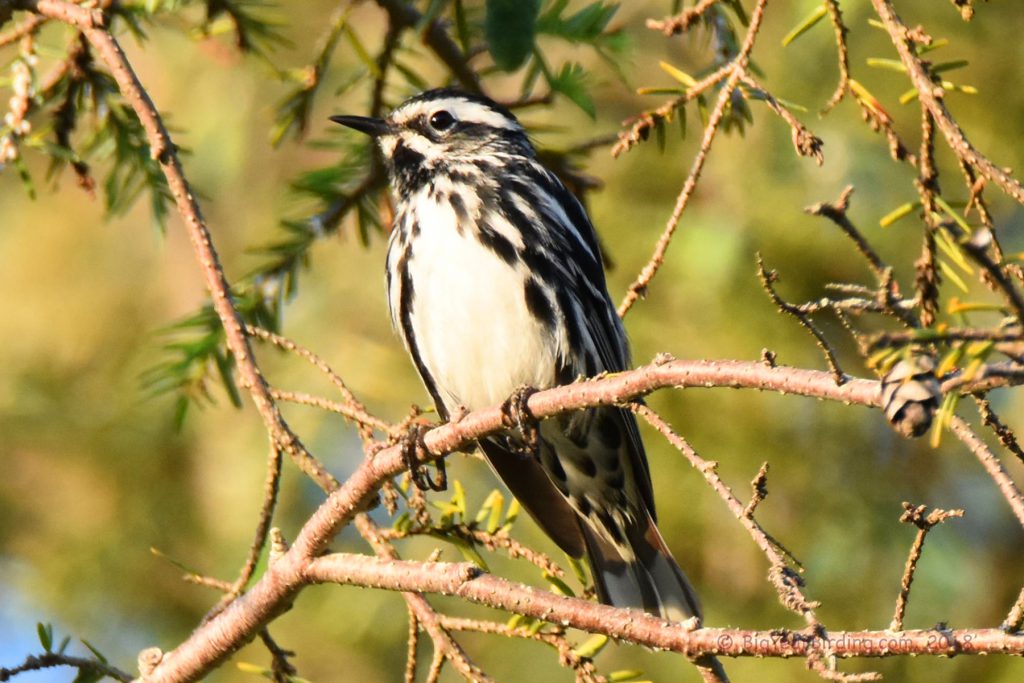
The Black-and-white Warbler is a small, migratory songbird that can be found across much of North America. They are roughly 4.5 inches long and weigh about 0.3 ounces. Their most distinguishing field mark is their unique black and white striped plumage, which resembles a zebra. Their wingspan is about 7.5 inches.

During breeding season, male Black-and-white Warblers establish territories and attract mates through their high-pitched songs. They prefer to nest in deciduous forests, usually in cavities in dead trees. The female lays 4-5 eggs, which she incubates for about two weeks before hatching. Both parents take turns feeding and caring for the young.
Black-and-white Warblers are neotropical migrants, which means they breed in North America during the summer and then migrate to Central or South America for the winter. They are one of the earliest migratory songbirds to arrive in their breeding grounds, usually arriving in April. During migration, they can be found in a variety of habitats, including woodlands, parks, and backyards.
In addition to their unique plumage and high-pitched songs, Black-and-white Warblers are known for their acrobatic foraging behavior. They climb up and down tree trunks and branches, searching for insects and spiders in the bark crevices. They also hover briefly to pluck insects out of the air.

While Black-and-white Warblers are still considered a species of least concern, their populations have declined in some areas due to habitat loss and fragmentation. Conservation efforts, such as maintaining and creating suitable nesting habitats, can help ensure the continued survival of this unique and fascinating bird.

